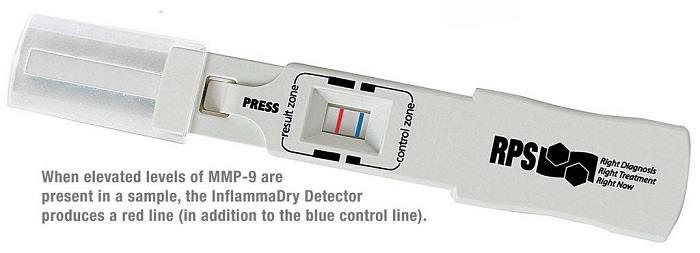Treatment Options
The first line of treatment is usually the use of artificial tears or lubricant eye drops, which can be purchased over the counter without a prescription. Systane Balance has proven to improve dry eye symptoms Instilling the drops several times a day or as needed can help people who have mild dryness. Lubricating ointments are also available and can be applied to the eyes at night to help maintain moisture during sleep. The drawback of this therapy is that the effects of artificial tears are generally short lived, and some people have to use the drops frequently throughout the day to remain comfortable. In this case, the use of drops or ointment is too inconvenient and unacceptable to some people.
Vitamins can help maintain an adequate tear film. Omega 3 and Omega 6 fatty acids support proper tear secretion and tear film health. The gel capsules are made from of fish oil, tumeric, and other important vitamins. Relief is usually experienced in 60 days. Eye Promise EZ Tears contains 8 natural, anti-inflammatory ingredients that have shown to decrease dry eye.
A technique called punctal occlusion may reduce or even eliminate the need for lubricating eye drops or ointment. The tears naturally drain out of the eye into the nasal passages through openings in the eyelid called puncta. The puncta are located toward the inner corner of the eye, and there is one punctum on each of the upper and lower eyelids. Medical grade collagen or silicone plugs may be inserted in the puncta to inhibit drainage and keep the tears in contact with the eye for a longer period of time. Usually, punctal plugs are applied to only the lower punctum, but in some cases all four puncta may be blocked.
Punctal occlusion is a fairly simple, painless procedure and can be performed in an eyedoctors office. In addition, the plugs may be removed at any time if excessive tearing is produced. In addition to the above treatments, researchers are investigating some alternative treatments with medications that are in the experimental phase now and may be approved in the near future. Although dry eye is a chronic syndrome and cannot be cured, the current treatments and lifestyle changes do bring relief for the millions of Americans suffering with the symptoms of dryness. Consult your eyecare professional for the latest treatment options appropriate for you.
Test for Inflammation We now have a device called RPS Inflammatory Detector, which tests for certain inflammatory markers in the tears, helping us determine the best treatment for your particular dry eye needs. The test is done in-office, and results are ready in 10 minutes.

When Inflammation is chronic, it can prevent tears and oils from being produced altogether. In this instance we would recommend a prescription called Restasis.
RESTASIS® is the only prescription eye drop for increasing tear production which may reduce inflammation on the eye surface in Chronic Dry Eye. Research has shown that Chronic Dry Eye (keratoconjunctivitis sicca) may be the result of a functional problem in the tear-producing glands of the eyes. This reduces tear production, resulting in an insufficient number of tears to lubricate or nourish the eye. RESTASIS® Ophthalmic Emulsion is the only prescription eye drop indicated to increase tear production which may be reduced by inflammation on the eye surface in patients with Chronic Dry Eye. Increased tear production was not seen in patients using topical steroid drops or tear duct plugs. The approved treatment is one drop in the morning and one drop at night in each eye, every day.
Unlike artificial tears, RESTASIS® Ophthalmic Emulsion helps increase your natural ability to produce tears which may be suppressed by inflammation due to Chronic Dry Eye. Chronic Dry Eye can be caused by a functional problem in the tear-producing gland of the eye. This can result in a declining quantity of tears. High risk factors for this condition include those individuals with health factors such as hormonal changes associated with aging and menopause, autoimmune diseases such as arthritis, lupus and Sjögren’s syndrome. Medical conditions such as diabetes also can contribute to its onset. Indeed, many patients using RESTASIS® report a noticeable increase in tear production with continued use. Davis EyeCare can tell you whether you have Chronic Dry Eye and whether RESTASIS® should be prescribed to help increase tear production. You can help Davis EyeCare make this determination by providing a complete picture of what you’re experiencing during the eye health examination.
